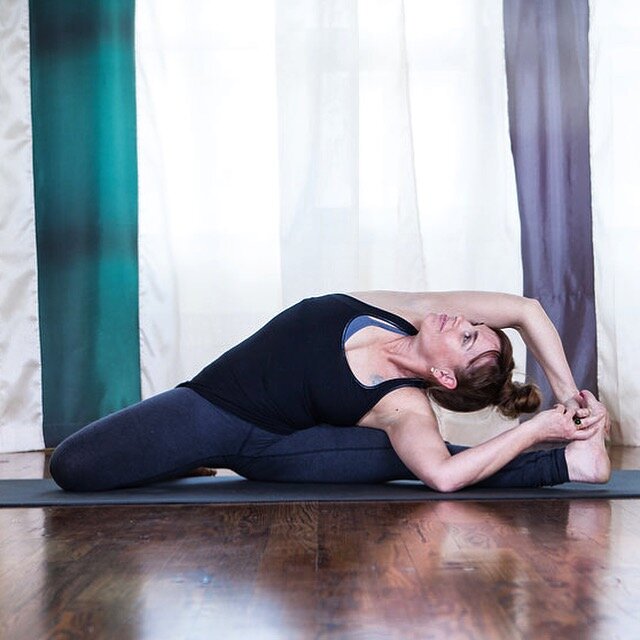Hatha Yoga
Today, especially in the West, hatha yoga is the most widely embraced path of yoga, but it is also greatly misunderstood. Many practitioners think hatha to be a style of yoga, which is true, but more broadly, all asana-based yoga falls under the umbrella of hatha yoga. The various styles of yoga sucha as Vinyasa, Ashtanga, or Iyengar, are specific systems of asana practice, but their roots stem from hatha.. Traditionally, Hatha yoga included the practices of asana, pranayama, meditation, and shatkarmas or purification practices. These formal practices of hatha yoga aimed to harmonize the flow of vital and mental energies preparing the practitioner for the realization of a higher state of consciousness.
“I salute the primeval Lord, Siva, who taught to Parvati the Hatha Yoga vidya, which is a stairway for those who wish to attain the most excellent Raja Yoga.”
The Evolution of Hatha Yoga
The Hatha Yoga Pradipika (15th-century), Siva Samhita (dates vary from pre-15th through mid-17th-century) and Gheranda Samhita (17th-century) are the classical hatha yoga texts stemming from the Tantric tradition. They include information not only about asana, but also detailed instructions about purification practices, breath techniques, mantras, mudras and meditation. These texts were a response to the emphasis placed upon meditation and ethics as taught by Sri Patanjali and the Buddha.
Both classical yoga and Buddhism asserted that stilling the mind through meditation and introspection leads to enlightenment. The hatha yogis disagreed with this approach. They argued that before we go to the mind, we must first work with prana, the vital force, as a means to still the mind and awaken the dormant spiritual energy residing within us. To awaken this energy requires a clean vessel, thus the hatha yogin tends to physical body as a temple of our soul.
Within most of us is a portion of our personality which seeks discipline and structure and another portion which would prefer to avoid it. The hatha yogis recognized and brought attention to the reality of the internal conflict of contradictory wants and desires. It was their belief that we could create a further divide in our psyche if we attempt to ignore our physiological impulses. Furthermore, the practice of hatha yoga slowly reduces these impulses as we steadily harness and increase the harmonious flow of our vital force.
Ultimately, hatha yoga is the stepping stone which leads us to Patanajali’s classical or raja yoga. As we increasingly live a clean lifestyle and tend to our vessel with respect and understanding of its purpose, our mind becomes much more receptive and dedicated to the deeper meaning of the teachings. Hatha yoga renders precision of our attention preparing us for the latter limbs of meditation and samadhi.
Asana
Yoga regards the body as a vehicle for the soul in its journey toward spiritual evolution. Yoga asanas are designed not only to develop the body, but also to broaden the mental faculties and spiritual capacities. According to yoga, true health is not a reflection of a body that looks fit but is a state wherein all the systems of the body function harmoniously under the intelligent control of prana and the mind.
Asana translates to ‘steady seat.’ Presumably, the seat referred to the seated mediation postures. There are mentions of asana dating back further than the Yoga Sutras, but it is within Patanjali’s 8-limbs that the term found a new prominence within the lineage of yoga. Many of the postures we practice in modern yoga classes today were developed over the last 200 years and popularized in the 20th by the Krishnamacharaya lineage, particularly through the teachings of B.K.S. Iyengar and Pattabhi Jois
Yoga asanas stimulate and release energetic knots, or grantis, held in the subtle energy channels, or nadis. Through asana practice, channels which were once blocked become unencumbered allowing the life force to flow freely. For this reason, yoga postures were advised to be held in order to gain maximum pranic benefit. Consistent practice results in greater vitality and bestows an increasing sense of contentment and joy for the practitioner.
“A stable and comfortable posture is asana.”
The Purpose of Asana
From the perspective of Patanjali’s classical yoga, the asana should be both steady and comfortable. This is an excellent reference point which holds the potential to enhance our awareness through a yoga asana practice. Not only will this reference point help to keep us safe within the practice, but it also keeps our mind and prana focused in the present moment.
When yoga asanas are practiced consciously, the postures become mental exercises of concentration and meditation. If we fail to recognize the spiritual aspect of the practice, we can easily create an imbalanced relationship with our physical body. Especially in our image driven society, yoga asana has become top heavy. Pictures of sculpted bodies creating impressive shapes requiring both strength and flexibility most certainly can be inspiring, but these type of images can also leave an inaccurate impression of the purpose of the posture practice.
Yoga recognizes that we have multiple layers to our being beyond our tangible physical body. Through proper alignment of the physical body, we harmonize our subtle energy, mind and intelligence taking us a step further towards wholeness. Although yoga asana is a physical practice, its essence is spiritual as it seeks to penetrate to the core of our being.

